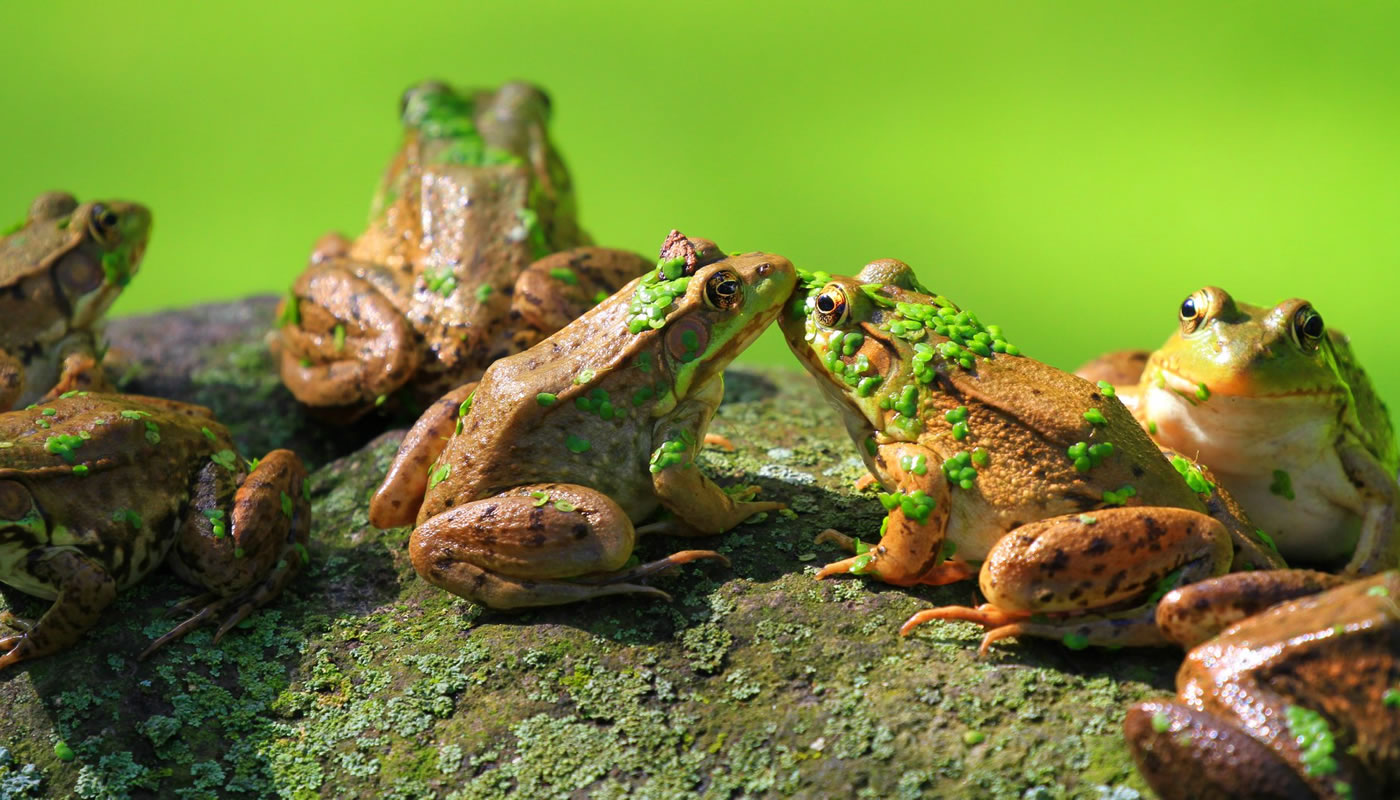Have you heard strange noises coming from the woods? No, it’s probably not a horror movie stunt, but it could be one of Cook County’s 12 species of frogs and toads! These amphibians make distinctive sounds to attract mates during their breeding seasons.
- The American toad (Bufo americanus) is a common species that breeds from mid-April to early May but may continue to call through late summer. Their call is a long, high trill that is reminiscent of a dial-up modem.
- Fowler’s toad (Bufo fowleri) can resemble an American toad in appearance, but instead of a trill its call is a prolonged nasal bleat, which can be heard from late April to late June. Despite speaking different languages, Fowler’s toad and the American toad have been known to breed with each other and produce hybrid offspring.
- The northern cricket frog (Acris crepitans) is a small tree frog that begins breeding in April and continues through the summer. It enjoys sunny banks of rivers and streams, and its call is a sharp clicking noise like a pair of marbles bumping together.
- If you’ve walked past a shallow pond or wetland between March and May, you’ve probably heard the boreal chorus frog (Pseudacris maculata). Its distinct call is a conclusive sign that winter is ending and spring will soon arrive. You can mimic its call at home by running your fingernail across the teeth of a plastic comb.
- Another welcome sign of spring is the piping whistle of the spring peeper (Pseudacris crucifer). Like the chorus frog, its mating season starts in early March and runs through early June. It sounds a lot like you’d expect from its name—its call is a high-pitched “peep” that could be a sound effect in a 50’s science fiction movie.
- The gray tree frog (Hyla versicolor) and Cope’s gray tree frog (Hyla chrysoscelis) are so similar in appearance that they were once classified as a single species. However, they can be distinguished by their calls. The call of the gray tree frog is a slow trill lasting longer than one second, which sounds like the call of a red-bellied woodpecker. By contrast, Cope’s gray tree frog’s call is a higher and faster trill that lasts for less than one second. Both species can be heard from late April through August.
- The bullfrog (Rana catesbeiana or Lithobates catesbianus) is the largest frog in Cook County, reaching 8 inches in length. Its mating season is late April through August, and its call has been described as a deep bass brum or jug-o-rum. You’ll know it when you hear it.
- The green frog (R. or L. clamitans) is often mistaken for a small bullfrog by people who didn’t know it was legal to name a species something so bland and uninspired as “green frog.” It breeds from May to September, its call is a short buzz that sounds like a loose banjo string being plucked, and it deserves a better name.
- The pickerel frog (R. or L. palustris) has a unique pattern of rectangular blotches on its back. It prefers cool, clear streams, and its mating season runs from April to mid-June. Its call is a gruff snore lasting 1 to 2 seconds that sounds a bit like a weed-whacker.
- The northern leopard frog (R. or L. pipiens) looks similar to the pickerel frog, but its blotches are round, rather than rectangular. It breeds from mid-March to May, and its call is a deep snore that can be replicated by rubbing your thumb across an inflated balloon, though it occasionally clucks as well.
- The wood frog (R. or L. sylvatica) is a small frog that is extremely cold-tolerant. It has the northernmost range of any North American amphibian or reptile, extending to the northern coast of Alaska and Canada. That’s right, the northern coast. It has a very short, explosive breeding season for one to two weeks in March, triggered by the first warm rains of spring. Its call is a soft clucking noise that sounds somewhat like a duck.
Here’s a bonus fact: you might notice that none of these species says, “ribbit.” In fact, the “ribbit” call is unique to the Pacific tree frog, which lives along the Pacific coast, and, notably, in Hollywood, California, where the largest volume of early frog recordings took place. Maybe if the film industry had taken off in Cook County, we’d think that frogs say “jug-o-rum” instead!
More information on the amphibians and reptiles of Cook County can be found here from the Illinois Natural History Survey. If you would like to hear these frogs for yourself, check out this site from the Indiana Department of Natural Resources.

